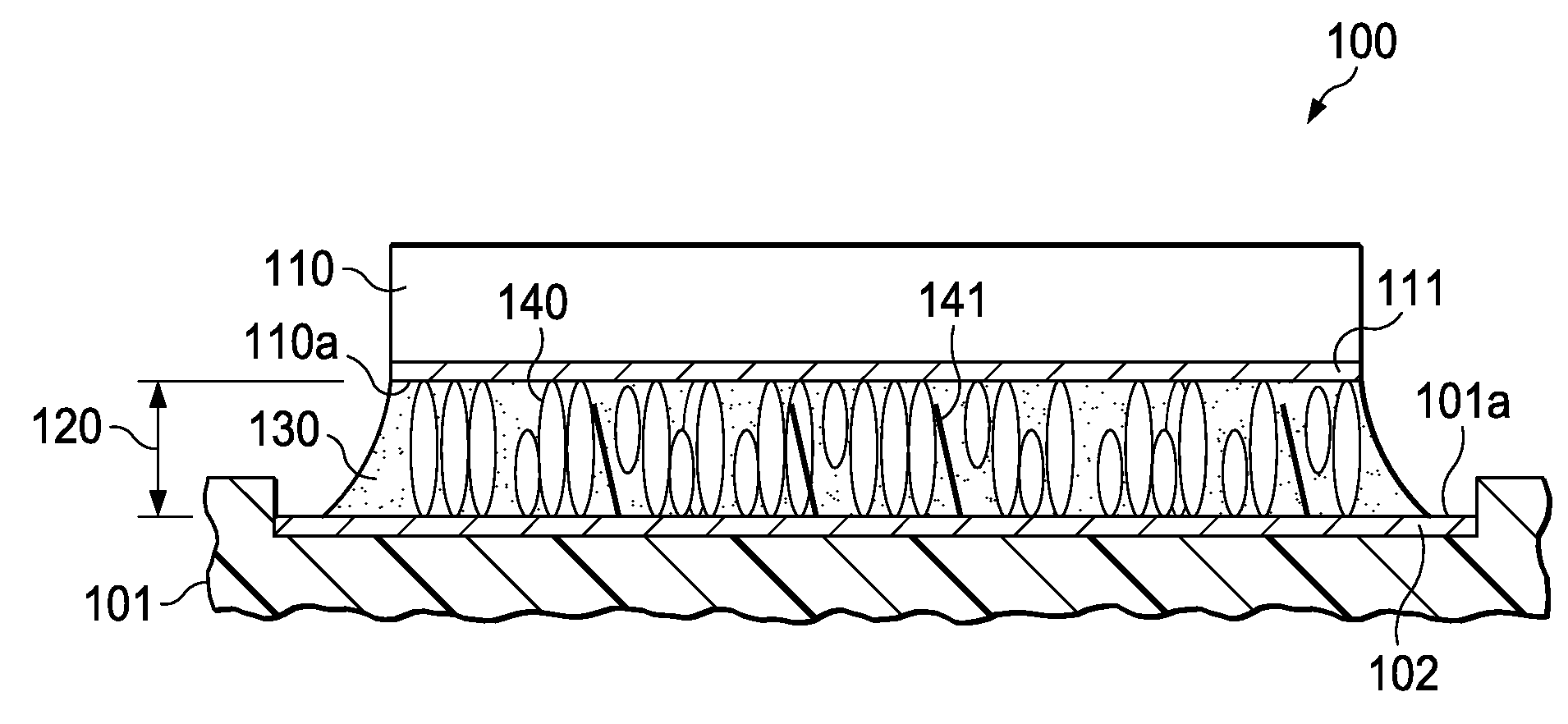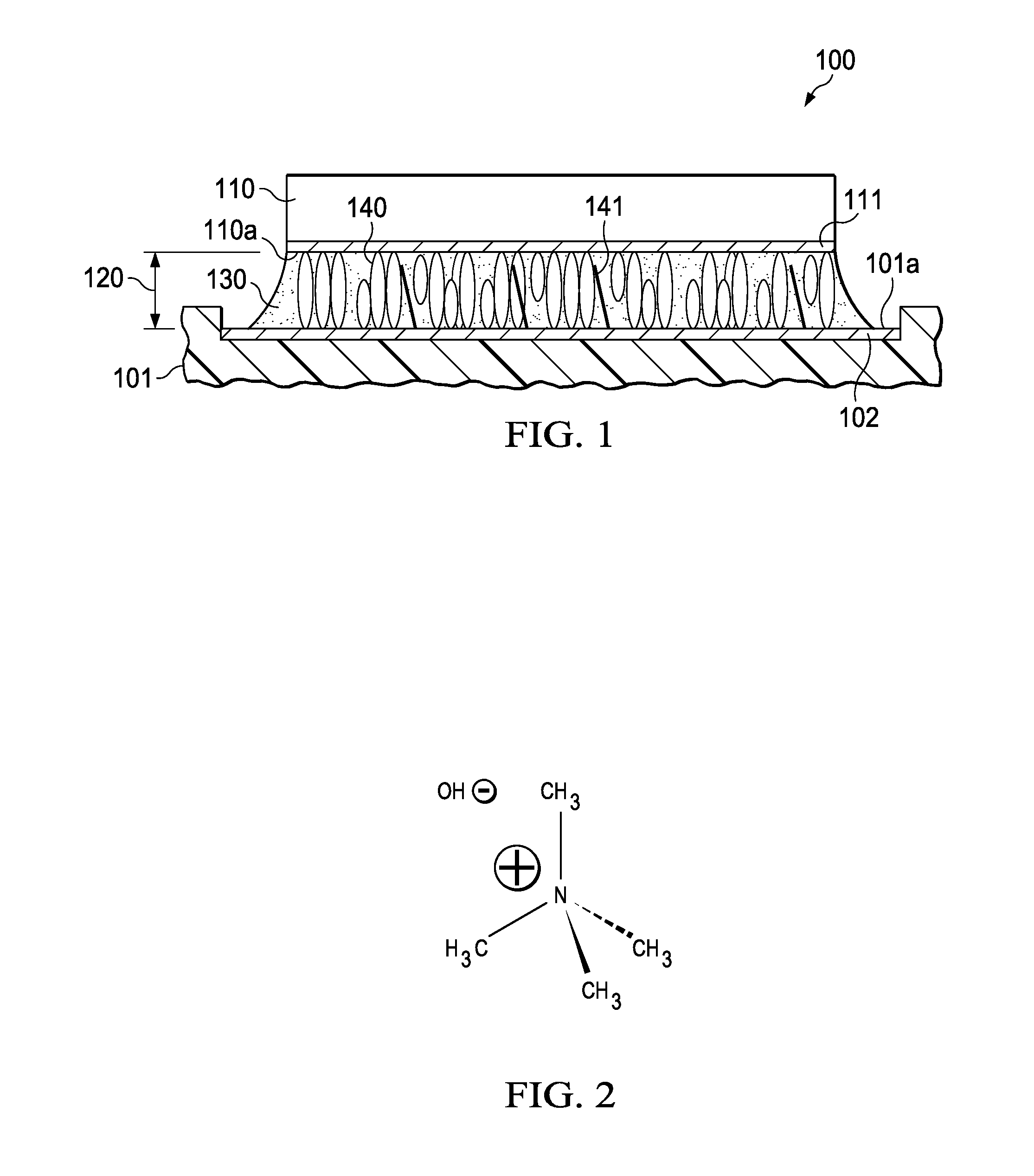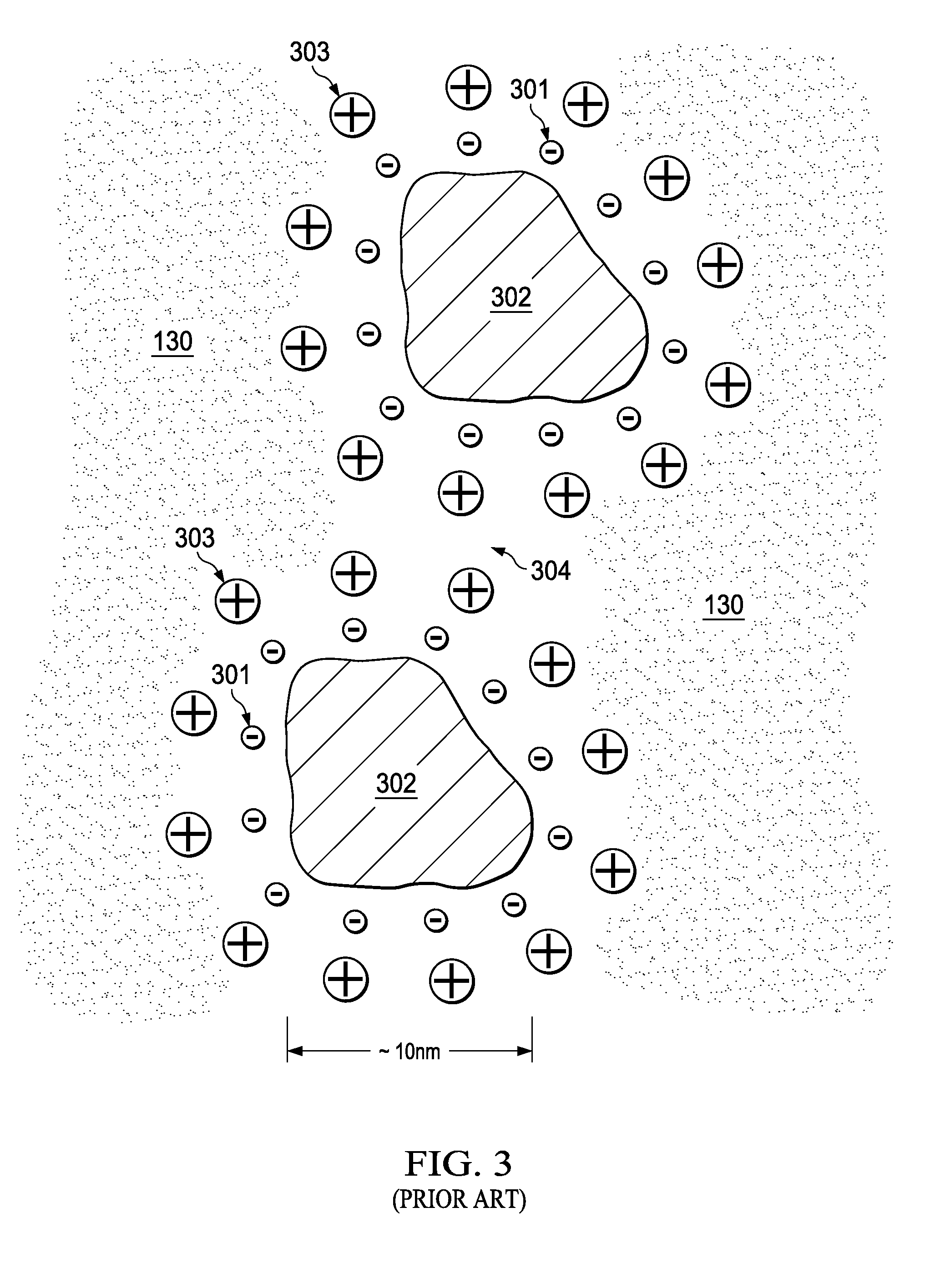Chip Attachment Layer Having Traverse-Aligned Conductive Filler Particles
a technology of conductive filler particles and conductive attachment layers, which is applied in the direction of layered products, transportation and packaging, chemistry apparatuses and processes, etc., can solve the problems of lowering the electrical conductivity of the attach layer and the electrical conductivity of the electrical conductivity, so as to reduce the electrical conductivity, the effect of lowering the electrical conductivity of the attach layer and reducing the electrical conductivity
- Summary
- Abstract
- Description
- Claims
- Application Information
AI Technical Summary
Benefits of technology
Problems solved by technology
Method used
Image
Examples
Embodiment Construction
[0017]In a schematic cross section, FIG. 1 illustrates an exemplary device generally designated 100 assembled with an embodiment of the invention. Device 100 includes a substrate 101 and a workpiece 110. Substrate 101 may be an insulator, such as an FR-4 board, or a metal, such as a leadframe pad. Substrate 101 has a first surface 101a, which may be insulating or metallic, dependent on the material of the substrate. Preferably, surface 101a has good electrical and thermal conductivity; as sown in FIG. 1, an otherwise insulating substrate may have a metal inset 102 so that first surface 101a is actually the surface of the metal pad.
[0018]Workpiece 110 may be a semiconductor chip or any other piece part to be assembled on substrate 101. In either case, workpiece 110 may have a metal layer 111; for reasons of the invention to be discussed later (ferromagnetism), a preferred metal for layer 111 is nickel. Workpiece 110 has a second surface 110a. If workpiece 110 has metal layer 111, sec...
PUM
| Property | Measurement | Unit |
|---|---|---|
| Fraction | aaaaa | aaaaa |
| Fraction | aaaaa | aaaaa |
| Percent by mass | aaaaa | aaaaa |
Abstract
Description
Claims
Application Information
 Login to View More
Login to View More - R&D
- Intellectual Property
- Life Sciences
- Materials
- Tech Scout
- Unparalleled Data Quality
- Higher Quality Content
- 60% Fewer Hallucinations
Browse by: Latest US Patents, China's latest patents, Technical Efficacy Thesaurus, Application Domain, Technology Topic, Popular Technical Reports.
© 2025 PatSnap. All rights reserved.Legal|Privacy policy|Modern Slavery Act Transparency Statement|Sitemap|About US| Contact US: help@patsnap.com



